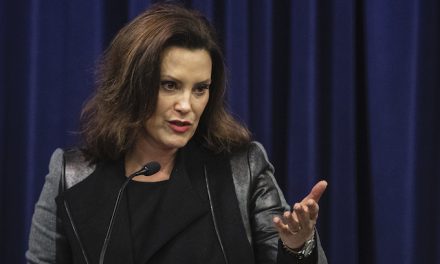If Carrie Flake-Worthy misses the bus, she either waits nearly an hour for the next one or walks 20 minutes from her SeaTac home to the nearest grocery store. She’s made the walk three times already this year, limited in what she can buy each time by what she can carry home to feed four children in her care.
The prospect of buying groceries online using government food assistance and having them delivered to her home under a pilot program beginning this week has her elated.
“There are no words to describe my excitement,” Flake-Worthy said. “This is going to be a major breakthrough … I don’t think people understand what this means for families.”
People in the Seattle area who receive Supplemental Nutrition Assistance Payments (SNAP), known in Washington as the Basic Food program, can use the benefit to buy groceries online from archrivals Amazon and Walmart. The pilot program, begun last April in New York, is expected to expand to all of Washington in the coming weeks. If it’s successful, the U.S. Department of Agriculture will consider testing the program in additional states.
For the 34.5 million Americans who receive government food assistance, scraping together enough money to pay for groceries is only part of the nutrition challenge. In many low-income neighborhoods, including in Seattle and south King County, a lack of nearby healthy food retailers makes it harder to eat well.
The Basic Food program provides benefits to people earning less than 200% of the federal poverty level, or $41,568 a year for a family of three. About 818,226 people in Washington received benefits through the program as of last June, including 165,345 in King County.
Online shopping, which increasingly includes groceries, seems like a promising solution, but federal food-program rules and technical hurdles have prevented people from using it until recently.
Public-health and nutrition experts see grocery delivery as one potential remedy to the interlinked problems of food affordability, so-called food deserts and their lesser-known counterparts, food swamps. The former are areas with few nearby grocery stores stocking fresh, healthy foods, while the latter are areas oversaturated with convenience stores and fast-food restaurants, which contribute to higher neighborhood obesity rates.
Elizabeth Kimball, who manages the Healthy Eating, Active Living Program at Public Health — Seattle & King County, said online grocery shopping and food delivery could help alleviate some of the strains for people living with food insecurity. She’s eager to see how the new pilot program works. “Can you reduce some of those transportation barriers, the cost and convenience barriers, by having that delivery service?”
Healthy food is less available in parts of south Seattle, as well south King County cities such as SeaTac, Tukwila, Kent and Auburn. These are also areas where lower-income people have moved as housing costs in Seattle have climbed over the last decade, Kimball noted.
Amazon’s initial Washington service area for the program includes more than 100 ZIP codes from Everett in Snohomish County to Federal Way in King County.
As part of the pilot, Amazon is not charging grocery delivery fees on orders of at least $25 to people who qualify for SNAP, clearing away one of the major financial hurdles of online grocery shopping. SNAP funds cannot be used to pay for delivery fees or other charges under the pilot program, just eligible groceries.
“That is so key,” Kimball said. “I would be very worried if they didn’t do that. The biggest barrier to delivery services is the delivery costs.”
Some food banks already provide limited grocery delivery, and other programs such as Meals on Wheels serve people in their homes.
A report to the city of Seattle last year on the availability of healthy food noted that existing food-bank clients, particularly older adults, were enthusiastic about home delivery, but many existing programs have a waitlist. Delivery is an essential link to nutrition for homebound people.
“As a result of this pilot, many clients may not have to rely on others to shop for them,” said Norah West, a spokesperson with the Washington Department of Social and Health Services, which administers the Basic Food program.
Moreover, online shopping promises substantially greater selection, scale and convenience, said Kristina Herrmann, director of underserved populations at Amazon.
“Those weren’t accessible to the SNAP customer until now,” she said. “When you think about the hurdles that everyone has to face, I think they’re exacerbated for the low-income customer who may be juggling multiple jobs, tough schedules, child-care issues and so on.”
Amazon remains a for-profit venture, increasingly in direct competition with grocery retailers. It sees an untapped market in the millions of people receiving SNAP benefits, which totaled nearly $53.7 billion last year. “We don’t want these customers shut out,” Herrmann said.
They had been for years. The SNAP online-purchasing pilot program was authorized in the 2014 Farm Bill. In 2017, the USDA selected eight retailers to participate: Amazon, Dash’s Market, FreshDirect, Hy-Vee, Safeway, ShopRite, Walmart and Wright’s Markets.
A Walmart representative confirmed the company’s stores were participating in the Washington pilot, but no one from the retail giant was available to discuss details.
Herrmann said policy and technical changes were needed to allow SNAP to be used for online shopping, including at payment processors and retailers themselves. They had to build systems to accept Electronic Benefit Transfer payment cards and the associated personal identification numbers required to authenticate them. They also had to certify systems that ensure SNAP funds are spent only on eligible grocery items.
Amazon’s SNAP selection includes groceries it sells directly through its AmazonFresh, Pantry and main shopping sites. Whole Foods Market was not included because Amazon’s acquisition of the grocery chain was not complete when the company joined the pilot project in 2017 and “there’s a lot of technical complexity in the integration” of the companies’ systems, Herrmann said.
She said she is confident that Amazon’s grocery pricing is competitive.
Kimball noted that people on food assistance tend to pay close attention to food prices, but also value convenience.
“They are very savvy with their money, going to grocery stores that have the best prices,” she said. “I think it’s going to be a very personal choice for people to decide what’s going to be the best for them and their families.”
Flake-Worthy plans to make use of the delivery service and said she was already imagining how she’ll use hours previously spent on exhausting grocery trips.
“I’m planning in my head for how much better it’s going to be,” she said.
___
(c)2020 The Seattle Times
Visit The Seattle Times at www.seattletimes.com
Distributed by Tribune Content Agency, LLC.
—-
This content is published through a licensing agreement with Acquire Media using its NewsEdge technology.



















Recent Comments